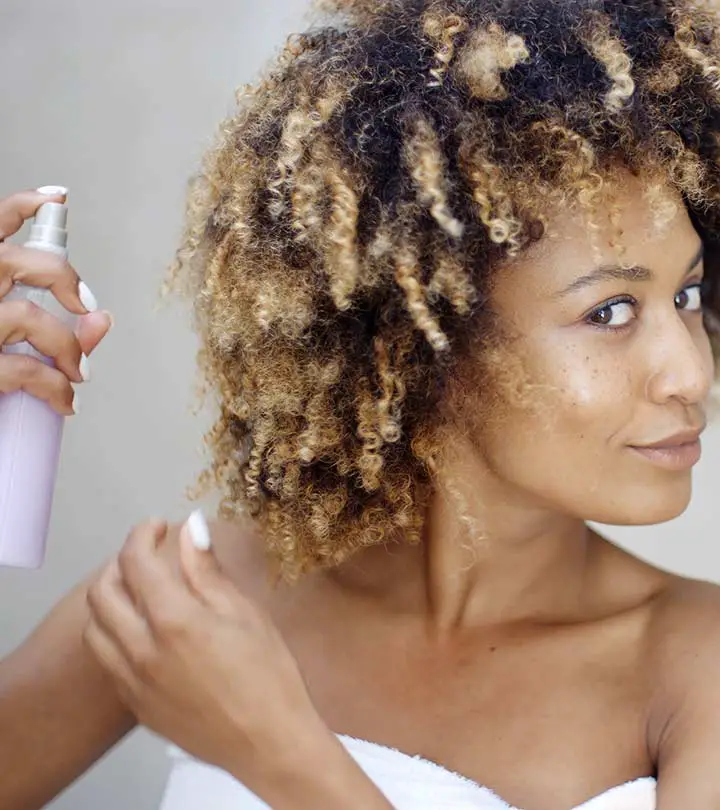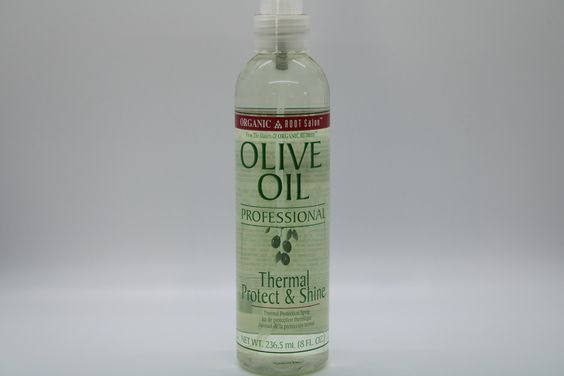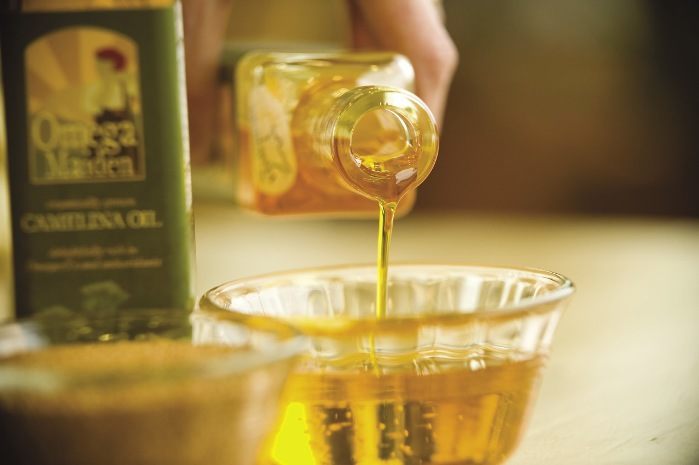How to use olive oil as heat protectant?
Jump To:

If you are anything like us, natural beauty products are something you enjoy. Haircare is no exception. We are all moving towards safer and cleaner ingredients. Natural products are very popular because you may already have them in your home, which makes them extremely cost-effective. Who doesn’t want to feel like a glamour queen mixing their own beauty products? We sure do.
This is an excellent place to start when you want to replace your heat protectors with something more natural since so many people use them every day.
Most heat protectors work by protecting your hair from heat damage, such as curling irons, straighteners and hair dryers. A good heat protector will protect your hair from damage by creating a protective layer around the shaft. It will also provide moisture and antioxidants to keep your hair soft and shiny.
You probably have all the ingredients you need to replace your heat protector with an all-natural, safe, and nutritious alternative. We’re talking olive oil.
Can olive oil be used to protect heat? Yes, in a short answer. Olive oil is a great heat protector for hair if used correctly. For the best heat resistance, make sure you choose refined olive oil.
This post will explain why olive oil is such a great choice, which hair types it works with, and how you can safely use it for the best results.
Why use olive oil as heat protector
Olive oil has been used in hair for thousands upon thousands of years.
Palmitic acid, Oleic acid and Squalane are all emollients in olive oil. Emollients penetrate hair shafts, delivering nutrients deep inside the hair and softening it.
The oil also contains vitamins E, A and other beneficial vitamins that protect hair from UV rays and free radicals. They can make hair shiny and smooth.
Types Of Olive Oil To Use As Heat Protectant

There are many options when it comes to olive oils: extra virgin, cold-pressed and refined. This can be confusing, and you may wonder if the oil you are using will work.
With a few modifications, any olive oil can be made to work for you. These are the most common types of olive oils you may have in your kitchen:
- Extra Virgin Olive Oil – This oil is the best on the market. It is made using cold-press technology that preserves all the goodness of the oil. It is low in acid and high in antioxidants.
- Virgin olive oil – This olive oil is also cold-pressed but has slightly higher acidity than extra virgin olive oils. It is slightly more resistant to heat than the former, which can make it a good heat protector.
- Refined Olive Oil – This oil is considered to be of moderate quality. It is less processed than other oils so it contains fewer antioxidants. However, it is high in vitamin E and can withstand high temperatures well.
You can use any type of olive oil on your hair. It will moisturize it, and provide vitamin E, antioxidants and moisture. However, the oil’s smoking point is the most important thing.
The Smoking Point is Important
The temperature at which oil starts to burn is called the smoking point. It is important not to let olive oil burn in your hair. This can cause free radicals in your oil and lead to hair breakage.
Olive oil can be used as a heat protector if you are aware of the smoking point and ensure that your heating tools do not exceed this temperature.
Here are the estimated smoking times for each type and variety of olive oil:
- Extra Virgin Olive Oil: 350-410 °F
- Virgin Olive Oil: 420-470 °F
- Refined Olive oil: 486 °F
Higher temperatures can be withstood by olive oil that is more refined. However, it does lose some of its vitamins and antioxidant content so there is a compromise.
You can adjust the temperature with your styling tools, but keep it below the smoke point if you don’t have the option. To be safe, use the finest olive oil if you do not have the ability to adjust the heat.
Not: If you notice smoke coming from your flat iron or a burning odor, it’s likely that your oil is at its smoking point. You should immediately stop to prevent further damage.
Is Olive Oil Heat Protectant Effective for All Hair Types?
Olive oil can be used on any type of hair. However, we have found the best results with natural, curly, and thick hair. People with straight hair may notice olive oil’s moisturizing properties.
Olive oil may not be the best option if you have naturally oily hair. It can increase oiliness. Olive oil is great for hydrating and protecting hair from heat damage if it’s drier than normal and has a lot of curls.
How to Use Olive Oil as Heat Protectant

You have your olive oil and your heating equipment. You may now be wondering how to use the oil as a heat protector. We’ve got your back. Olive oil can be used in the same way as any other heat protector.
To get the best results, follow the steps below:
- For the best distribution, place olive oil in a spray-bottle. You don’t need a spray bottle to get the best distribution. Instead, you can pour 1/4 cup olive oil in a small bowl. Dip your fingers into it and apply to your hair.
- Start with clean, dry hair. It is time to brush it and section it.
- Adjust the temperature of the heating tool and ensure it is below the smoking point for the oil type you are using.
- Spray or apply oil to each section with your fingers. Start at the ends and work your way upwards, stopping just a few inches below your roots. You only need a little. Apply a few drops of oil or a light spray to each section.
- Apply the oil to the hair and style it as usual. To prevent oil from heating up, don’t leave one section of hair unattended.
- To keep your hair in place, finish with a setting spray. You are done!
It is very easy to use olive oil as heat protector. You need to be mindful of the following: quantity (too many oil can cause your hair to look greasy), and smoking point (don’t leave your curling iron in one place for too long).
Does Olive Oil Help Reduce Hair Frizz?
Olive oil is a great heat protector. It instantly makes your hair healthier.
Because olive oil seals each hair cuticle, it does a remarkable job of reducing frizz and splitting ends.
It creates a silky effect when used in combination with styling tools.
Can Other Oils Be Used As Heat Protectants?
You can use other oils such as coconut oil, argan oil, and avocado oil to protect your heat. All oils contain emollients that have moisturizing properties. To ensure that you can safely use your heating tools with each oil, it is important to know its smoking point.
You should be aware that each oil has its own unique properties. Coconut oil is excellent for treating damaged hair, while shea butter is perfect for thick, coarse hair due to its high heat conductivity.
Conclusion
Anyone looking for an affordable and natural alternative to heat protectors should consider olive oil. It is important to know the oil’s smoking point so that you don’t get burned. However, the oil is easy to use and produces good results.
Natural products may not work for everyone. Olive oil is good for most hair types, but we recommend that you try other oils if your hair is particularly thin or fragile.
Argan oil, a lighter oil than olive oil, might be better for your hair because it doesn’t weigh down your hair. You can experiment with various oils until you find the one that suits you best.
Can I use olive oil as heat protector?
The vitamin E in olive oil fights the damage caused by sunlight and pollution. Add to that that the smoking point of extra virgin olive oil is 320°F (160°C) which makes it a fair heat protectant as well.
Can you use olive oil before straightening hair?
Regular hot-oil treatment not only nourishes the hair but is also effective as a straightening technique. Massage the scalp and hair with a mixture of coconut and olive oil and cover the hair with a hot towel.
What can I use as a substitute for heat protectant?
These natural heat protectants might replace the usual trip to the beauty store with a trip to the grocery store. Choosing an oil.
Argan Oil, Coconut Oil, Shea Butter, Grape seed Oil, Almond Oil, Avocado Oil.
Does oil work as a heat protectant?
What we love most about using oil as a natural heat protectant is that it also helps prevent the drying effect that heat styling tools have on your hair. When it comes to application, you can apply the oil on your hair after washing and before drying.
Can I apply oil before straightening?
Can I use oil before straightening? No, do not use any oil before straightening. Dry your hair completely with a blow dryer before using a straightener.
How often can I use olive oil on my hair?
once a week There’s nothing harmful about conditioning with olive oil. Unless your hair is dry enough to require a moisturizing treatment every day, use it once a week or less often for the best results.
Can you flat iron with olive oil?
Which oil is best for straightening hair?
Castor Oil and Soyabean Oil Castor oil helps prevent frizzing out while soyabean oil makes your hair straighter. All you need is about 2 tbsp of castor oil and 1 tbsp soyabean oil. Heat the mixture until it’s warm and then let it cool. Massage your scalp and hair with it for a few minutes.
Is it OK to straighten your hair without heat protectant?
Experts reveal sleek solutions without the damage. Transforming wavy hair into a stick-straight style often involves the copious use of chemicals, hairdryers, and flat irons—all amped up to their highest, most follicle-damaging heat settings.
How can I protect my hair before straightening?
USE A HEAT PROTECTANT SPRAY OR SERUM Before you take an iron or a blow-dryer near your strands, you have to provide it with some protection. What you need to apply on your mane is a heat protectant spray or serum. It acts as a barrier against damage and keeps your hair colour intact.
How can I protect my hair from heat damage naturally?
Tips for Avoiding Heat Damaged Hair
- Limit Heat Use. As a general rule, use the lowest temperature setting possible on irons or blow-dryers to achieve your look.
- Use a Heat Protectant.
- Don’t Heat-Style Damp Hair.
- Follow a Cleansing Regimen for Damaged Hair.
- Avoid Hair Dye.
- Use a Leave-In Conditioner.
- Get a Haircut.
